#Library of Ashurbanipal
Explore tagged Tumblr posts
Text
LIBRARY OF NEO-ASSYRIAN KING ASHURBANIPAL MENTIONED!!!
*slams the reblog button*
It makes me fairly sad that people don't explore brother dynamics within obey me more. We know that some of them have separate group chats without the others, like Beel, Satan and Asmo have one together, and Asmo and Mammon have been spotted getting along many a time. Levi and Mammon both dunk on lucifer alot, the anti Lucifer league ect..
I'm not sure where I was going with this but I think what I'm saying is I like seeing them be friends and no bullying each other




#library of ashurbanipal#i will reblog anything that mentions the library of ashurbanipal#ashurbanipal was a terrible guy but he had a great library#also kama sutra would be in the religion section
691 notes
·
View notes
Text
#podcasts#99% invisible#archaeology#ancient history#assyria#Neo-Assyrians#Nineveh#Library of Ashurbanipal
0 notes
Note
I just listened to the podcast interview you posted here, and the question you answered about Alexandria intrigued me! I always thought that the city Alexander left was smaller and not as relevant as it would eventually become. Could we then say that the Ptolemies carried out (probably due to their own interests as sovereigns, but still) Alexander's will by turning Alexandria into an international hub in the Mediterranean?
Alexander merely "cut" the lines of what would become Alexandria (e.g., the basic layout of it). He never lived to see it built. There's some debate as to how much input he really had, but I'm disinclined to dismiss a very real interest on his part in city design. He was Aristotles' student. :-)
I do think he had big plans for the place. So in that respect, Ptolemy (and his successors) carried out what I believe he wanted, including the library. Supposedly, he was inspired after being shown the ruins of Ashurbanipal's Library when they passed Nineveh on the way to fight Darius at Gaugamela. He wanted to do the same, but with all Greek knowledge. (E.g., collect it in one place.) Again, some have doubted the idea of the library was ever his, but it doesn't strike me as an un-Alexander-ish notion.
7 notes
·
View notes
Text
Us? (I’m lying on my death-bed and you are suffering next to me)

#classical books#classic books#epic of gilgamesh#classics#gilgamesh#enkidu#love story#books and libraries#book adaptation#ashurbanipal#literature moodboard#literature aesthetics#classic literature#classic lit memes
3 notes
·
View notes
Text
10 Hidden Gems in History You Didn't Learn in School
History is a vast tapestry woven with countless threads of human experience, innovation, and interaction. While school curriculums often focus on the major events and figures, there are many lesser-known but equally fascinating stories that offer rich insights into our past. Here are ten hidden gems in history that you likely didn’t learn about in school, each one a testament to the diverse and…

View On WordPress
#Ancient artifacts#Ancient civilizations#Antikythera Mechanism#Ashurbanipal Library#Çatalhöyük settlement#Baghdad Battery#Benin Bronzes#Forgotten history#Great Zimbabwe#Hidden historical facts#Historical discoveries#Historical gems#History you didn&039;t learn in school#Indus Valley urban planning#Kingdom of Axum#Lesser-known history#Norse exploration of America#Unexplored history#Vinland Sagas#Zheng He voyages
0 notes
Text
So, last November I got to try my hand at Alchemy
Maddalena Rumor, in the Classics Department of Case Western Reserve University came to have dinner with us and mentioned she'd just successfully turned silver gold.
She had an alchemical recipe from a 7th century BCE cuneiform tablet from the library of Ashurbanipal. She'd been working with Rekha Srinivasan, from the Chemistry Department to see if they could translate the cuneiform, identify the substances mentioned, and then try the recipe to see if it worked.

They traveled to the British Museum to examine the tablet up close. By studying the partial strokes along the edges, Maddalena could make some educated guesses about missing words. Rekha, in turn, could use the descriptions of the substances to make some guesses about what they might be. Then they could start testing their best guesses with experiments.
This is complicated by the tendency of alchemical texts to use code words or inside jokes to describe materials or techniques. Something like me making a recipe that calls for 2 Legs and 1 Arm of Policeman and my friends all knowing it means 2.5 ingots of Copper.
I know the word alchemy comes from the Arabic al-kimia and that it eventually developed into chemistry, but I've always associated it with the worst of the Dark Ages in Europe--charlatans or wannabe magicians in smoke-filled, poorly lit cellars full of of mummified animals and just generally gross stuff that is not my jam.
I'm wondering now if that's because medieval alchemists were reading a lot of things literally that weren't meant to be taken that way. There's a reference in one of Maddalena's article's to a rare case where "human excrement" called for in a recipe is revealed to actually mean "garlic." I can see a lot of ancient alchemists laughing up their sleeves.
I had just learned during a trip to Naples the previous summer that the alchemy of Renaissance philosophers like Pico Della Mirandola was very different from the stuff in the basements of Prague. Instead of dreckapotheke, they were translating texts from the Ancients Greeks, texts that were perhaps based on the very tablets from the 7th Century BCE that Maddalena was studying. I promptly begged to observe her next experiment.
She very graciously said yes, so I went down to a lab at Case and I wish I had taken better notes, but I did not, so what I've got is a bunch of pictures, and I'll have to go back and badger Maddalena for details.

These are the ingredients for the next round of testing.

They will be mixed into a solution in the flask on the right and then heated on a burner.


Then silver tablets will be dipped into the solution:
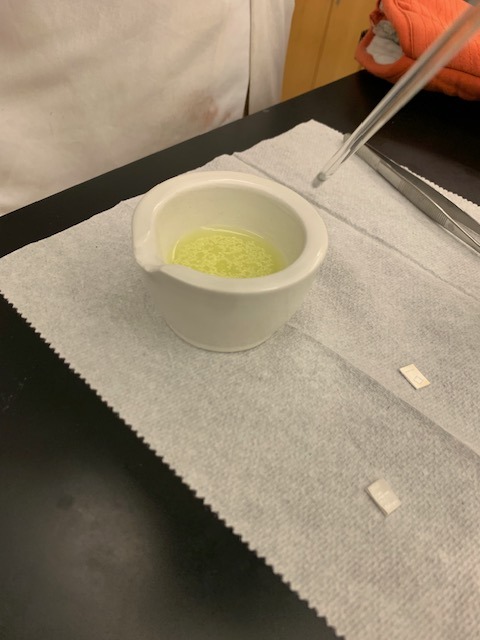
And turn gold!

Not *into* gold. That was not the plan. Hope you aren't disappointed.
If you thought the object of alchemy in those dark basements in Prague was turn to lead into gold, yeah me, too. And maybe it was, but the alchemy of the ancient Near East seems to have been more clear that transmutation wasn't on offer. After reading some of Maddalena's articles, I now know there were four main practices of alchemy back in the day: coloring silver gold, making a silver alloy that still looked like silver, coloring glass to look like precious stones, and dying wool purple without using those expensive snail shells from Tyre.
I talked about alchemy a lot (really, a lot, everyone was very patient) at a recent writing retreat. Erin Bow called it the Science of Knock Offs.
There are multiple ancient sources that say that this "holy and divine art" (hē hiera kai theia technē) was taught to mankind by fallen angels who were sharing the secrets of heaven. I know it seems ridiculous that an all knowing divine being is going to focus on the Secret Science of Knock Offs, but the more I I think about it, the more I can see it.
ARMUMAHEL: We will share with you the great mysteries of heaven!
MANKIND: . . .
ARMUMAHEL: I can save you some money on purple dye.
MANKIND: YAY!
SAMYAZA: So how did the secret sharing go today, Armumahel? Did they ask about the language of birds? The control over monsters of the deep?
ARMUMAHEL: I told'em how to make glass marbles look like sapphires.
SAMYAZA: You do know Enoch is writing all this down. His book is going to be stuck in the apocrypha and we're going to be laughing stocks.
ARMUMAHEL: I promised to tell them tomorrow how to turn silver gold.
SAMYAZA: Ah! Transmutation of matter! That's a good one!
ARMUMAHEL: No, not transmutation. They just want the silver bowls on the alter to be yellow and shiny.
SAMYAZA: . . .

My shiny yellow tablet. : )
225 notes
·
View notes
Photo

The Legend of Sargon of Akkad
The Legend of Sargon of Akkad (c. 2300 BCE) is an Akkadian work from Mesopotamia understood as the autobiography of Sargon of Akkad (Sargon the Great, r. 2334-2279 BCE), founder of the Akkadian Empire. The earliest copy is dated to the 7th century BCE and was found in the ruins of the Library of Ashurbanipal in the 19th century.
The text, most likely composed c. 2300 BCE, and also known as The Birth Legend of Sargon, describes the king's humble origins and rise to power with the help of the goddess Ishtar and concludes with a challenge to future kings to go where he has gone and do as he has done. Sargon was the founder of the first multinational empire in the world whose reign became legendary, inspiring many tales about him, but very little is known of his life apart from works such as The Legend of Sargon of Akkad and the literary piece Sargon and Ur-Zababa.
Both pieces today are sometimes classified as belonging to the genre of Mesopotamian naru literature – the world's first historical fiction – in which a famous figure, usually a king, is featured as the main character in a fictional work. This genre appeared around the 2nd millennium BCE and was quite popular, as evidenced by the number of copies found of naru works.
The purpose of naru literature was not to deceive an audience but to impress upon them some important religious or cultural value. In the case of The Legend of Sargon of Akkad, however, the naru genre seems to have been used to establish Sargon as a 'man of the people' who, beginning life as an orphan with nothing, forged his own destiny and established an empire.
The Legend & Naru Literature
Sargon of Akkad was keenly aware of his times and the people he would rule over. He seems to have understood, early on, that the common people resented the nobility and, while he was clearly a brilliant military leader, it was the story he told of his youth and rise to power that exerted a powerful influence over the Sumerians he sought to conquer.
Instead of representing himself as a man chosen by the gods to rule, he presented a more modest image of himself as an orphan set adrift in life who was taken in by a kind gardener and granted the love of the goddess Inanna/Ishtar. According to The Legend of Sargon of Akkad, he was born the illegitimate son of a "changeling", which could refer to a temple priestess of Ishtar (whose clergy were androgynous) and never knew his father.
His mother could not reveal her pregnancy or keep the child, and so she placed him in a basket which she then set adrift on the Euphrates River. She had sealed the basket with tar, and the water carried him safely to where he was later found by a man named Akki, a gardener for Ur-Zababa, the king of the Sumerian city of Kish. In creating this legend, Sargon carefully distanced himself from the kings of the past (who claimed divine right) and aligned himself with the common people of the region rather than the ruling elite.
The Legend, as noted, is considered by some scholars today as belonging to the genre of Mesopotamian naru literature, but it is unknown whether it would have been understood that way in its time. Scholar O. R. Gurney defines the genre and its origin:
A naru was an engraved stele, on which a king would record the events of his reign; the characteristic features of such an inscription are a formal self-introduction of the writer by his name and titles, a narrative in the first person, and an epilogue usually consisting of curses upon any person who might in the future deface the monument and blessings upon those who should honour it. The so-called "naru literature" consists of a small group of apocryphal naru-inscriptions, composed probably in the early second millennium B.C., but in the name of famous kings of a bygone age. A well-known example is the Legend of Sargon of Akkad. In these works, the form of the naru is retained, but the matter is legendary or even fictitious. (93)
The extant copy, made long after Sargon's death, conveys the story Sargon would have presented regarding his birth, upbringing, and reign. Naru pieces such as The Legend of Cutha or The Curse of Agade use a well-known historical figure (in both these cases Naram-Sin, Sargon's grandson) to make a point concerning the proper relationship between a human being (especially a king) and the gods. Other naru literature, such as The Great Revolt and The Legend of Sargon of Akkad, tell a tale of a great king's military victory or origin. In Sargon's case, it would have been to his benefit, as an aspiring conqueror and empire builder, to claim for himself a humble birth and modest upbringing.
Continue reading...
145 notes
·
View notes
Photo

5,500 Year Old Sumerian Star Map. This cuneiform clay tablet that indicates the Köfel’s impact event was observed in ancient times. The circular stone-cast tablet was recovered from the 650 BC underground library of King Ashurbanipal in Nineveh, Iraq in the late 19th century.
219 notes
·
View notes
Text

Flood tablet/Epic of Gilgamesh, from the Library of Ashurbanipal, Assyrian, 7th century BC
from The British Museum
#history#antiquities#art#ancient history#ancient art#cuineiform#epic of gilgamesh#ancient mesopotamia#assyrian
1K notes
·
View notes
Text
The lost name

I think Vanitas’s real name could be Deucalion.
In this text I’ll cover my reasons for choosing this name, its connection to the story of Noah and the myth of Pandora and how would it correlate with the relationship of Vanitas and Noé.
Posting this as an actual answer to @scar-eyejolteon14 as promised here.
The lore of Deucalion
It all started when I was wondering what kind of name I could give Vani if I were to draw him as a Chasseur (ordinary human, who’ve never met Luna and never inherited their name). I began with the most obvious thing: checking Vani’s wiki page for existing details and references. I went with his zodiak sign, Aquarius, as the staring point, because stars and celestial bodies are recurring theme in VnC and well why not?..
The next obvious place to go is wiki page for Aquarius. Here we come across a fun thing: Babylonian star catalogues. They contained lists of stars, constellations, and planets.
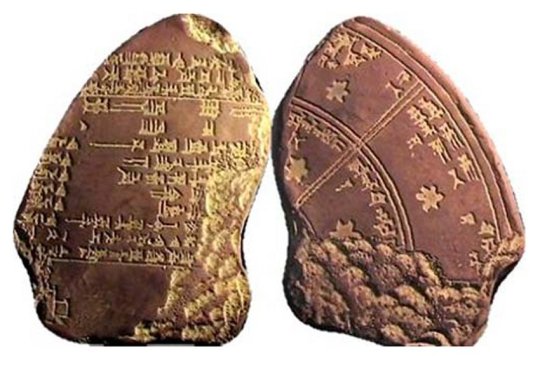

I found the first picture on a somewhat strange website, but whatever. This is a fragment of a circular star calendar, which belonged to the library of King Ashurbanipal (668-627 BC) in Nineveh. The second picture is a star list, found in Uruk (320-150 BC). It had information on all constellations such as names, number of stars, their distance, etc. Just so we understand that astronomy was a big deal there.
And yes, the capital of Babylonia was Babel — that one city with the tower (The Book of Genesis, Genesis 11) which is referenced in VnC.


(Ch. 21)
What did Babylonian astronomers think of Aquarius? Well, they associated this constellation with the Ea. “The Great One” is his title. He’s also known as Enki, god of magic, fertility, creation, etc., who was originally a water god (and his temple name E-apsu means “house of the watery deep", idk I think it sounds really cool). The water theme is not random: Aquarius was also associated with floods. Water was sacred, but also deadly: floods were source of destruction.

Later, a Latin author Gaius Julius Hyginus quoted an Alexandrian historian Hegesianax that Deucalion is to be identified with Aquarius, "because during his reign such quantities of water poured from the sky that the great Flood resulted." Again, we see the idea of destructive flood. But where does Deucalion bring us? To Noah. Or Noé, if you will.

(Ch. 1)
Deucalion and Noah
Both Deucalion and Noah are central figures of the classical flood myth, which exists in various cultures. While these two are probably among the most popular figures, there are other examples, including Utnapishtim, who was warned by the god Ea (who also created humans among other things) about the flood and instructs him to build a boat and save his family and animals. The stories of Deucalion and Noah follow the same pattern with some minor variations. But Deucalion is the one who is associated with Aquarius, the constellation that symbolizes the coming of the flood and all its terrors, while Noah/Noé is associated with salvation of human race and all living things.

Deluge, 1864, by Aivazovsky. This painting depicts a beginning of a biblical story about the near-end of human race. It’s pretty much the same in other versions of the story.
Deucalion and Pandora
What’s interesting, Deucalion’s myth is directly related to Pandora’s myth. Deucalion is usually described as the son of Prometheus, while Deucalion’s wife Pyrrha was the daughter of Pandora. And Pandora’s myth is among the core themes of “Pandora hearts”. If we consider the possibility of VnC and PH’s universes being connected, the idea of Deucalion being Vani’s true name would also make sense… For example, this theory covers the topic.
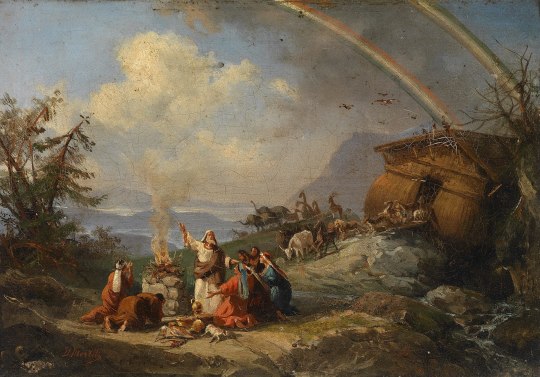

Left – Noah gives Thanks for Deliverance, 1901, by Domenico Morelli. Here we see Noah from the Old Testament, with his family, as they give thanks for their safe deliverance back to land after surviving the flood. A double rainbow signifies God’s presence.
Right – Deucalion and Pyrrha, 1636–1637, by Rubens. This painting shows a scene from the story of Deucalion and Pyrrha as told by Ovid in Metamorphoses. After surviving the disaster, they had to throw stones over their shoulders, each of which became a new human being.
Even if worlds of Pandora Hearts and Vanitas no Carte don’t exist in the same universe, there clearly is thematical relation between the two stories, one being about hope and another about despair. What’s even more interesting, there was actually a whole discourse about what’s hidden in Pandora’s jar: is it true hope or is it actually an illusion of salvation which hurts even more than actual despair? The translation of the word elpis, the spirit of hope in the jar, is actually neutral in its meaning. It’s simply “hope”, not inherently “good” or “bad”, which leaves a lot of space for interpretation in media.
Vanitas and Noé
Volume 3 cover implies that Vanitas will be marked by an Archiviste. It’s unknown whether this Archiviste would ne Noé or Machina or even some other. I hope it’s gonna be Noé, because it would break a specific border between them and it will definitely be very dramatic, but Machina might do it for the sake of obtaining information, which is her main thing. Anyway, regardless of who does this, when and why, I believe that this moment is probably the real possibility for revealing the true name of Vanitas.

On a side note, it would also be kinda interesting if Noé gets to know Vani’s true name, but it will still be hidden from us, the readers. There’s is also a possibility that Vani’s true name will not be revealed even in this situation. His goal is to erase everything related to the Vampire of the Blue Moon, and I guess that would mean erasing everything about himself too. But in Ch1 he promises to stay here even after he is gone, so it might imply that at least someone will get to remember him — perhaps as Xxxx the human, not Vanitas, kin of the Blue Moon. Which might mean going against Luna’s request…

(Ch. 50)
And, well, Xxxx could de Deucalion. Just think about it: wouldn’t it be cool if both Vani and Noé were given names with similar symbolism behind it and later both assume the moniker of Vanitas?
Plus the whole “loop” thing, like “memory loop” theory and “time loop theory” (here and here) again adds to the idea of connection between them. The loop where ends and beginnings melt into each other, like Ouroboros eating its own tail. The loop between Vanitas and Noé, where they will have to understand pointlessness and hopefulness of life – and what does in mean to save and be saved.
The ultimate hope of survival becomes fleeting dream for all caught in this loop. But every dream is destined to end, as pointed by Saint Germain. And what will happen, when Vanitas and Noé will have to wake up from the dream of their own? What will prevail - death and futility of life or salvation and rebirth?

(Ch. 55)
#vanitas no carte#memoir of vanitas#the case study of vanitas#vnc meta#vnc theory#vnc vanitas#vnc noé#vnc#mochizuki jun#case study of vanitas#noe archiviste#mochijunverse#vanitas no carte meta#vanitas no carte theory
92 notes
·
View notes
Text

Enuma Elish - The Babylonian Epic of Creation
The Enuma Elish (also known as The Seven Tablets of Creation) is the Babylonian creation myth whose title is derived from the opening lines of the piece, "When on High". The myth tells the story of the great god Marduk's victory over the forces of chaos and his establishment of order at the creation of the world.
All of the tablets containing the myth (also known as Enuma Elis), found at Ashur, Kish, Ashurbanipal's library at Nineveh, Sultantepe, and other excavated sites, date to c. 1200 BCE. Their colophons, however, indicate that these are all copies of a much older version of the myth dating from long before the reign of Hammurabi of Babylon (1792-1750 BCE), the king who elevated the god Marduk to patron deity of Babylon. The poem in its present form, with Marduk as champion, is thought to be a revision of an even older Sumerian work.
As Marduk, the champion of the young gods in their war against Tiamat, is of Babylonian origin, the Sumerian Ea/Enki or Enlil is thought to have played the major role in the original version of the story. The copy found at Ashur has the god Assur in the main role as was the custom of the cities of Mesopotamia. The god of each city was always considered the best and most powerful. Marduk, the god of Babylon, only figures as prominently as he does in the story because most of the copies found are from Babylonian scribes. Even so, Ea does still play an important part in the Babylonian version of the Enuma Elish by creating human beings.
Marduk: The King of Anunnaki
61 notes
·
View notes
Text

Interest checks are still open for our rebooted Shinguji Fanzine! You can find more details about the project on the carrd linked below.
https://shingujizine.carrd.co/
🌹 The earliest known library is the Royal Library of Ashurbanipal from Mesopotamia (specifically Assyria), founded sometime in the 7th century BCE. Most texts kept in Mesopotamia were commercial and administrative records, but a large body of “omen texts” were also recovered. The omen texts had mostly astrological predictions, relating celestial phenomena directly to the king and the state.
30 notes
·
View notes
Text


First date idea
#alexandria library#ashurbanipal#dark acadamia aesthetic#dark academia#bookshop#books and libraries#library aesthetic#girlblogging#girlhood#first date#ancient history#ancient art#ancient civilizations#artwork#art vintage#light academia#dark art#culture
2 notes
·
View notes
Text
The History of Glass and Glass Making
Glass is an amorphous solid, often transparent material. The amorphous part means that the atoms aren't aligned in any particular order. It is formed when molten silicon containing compounds are cooled rapidly. It is fairly easy to shape and is inert, meaning it won't interact with most chemicals, making it a good container for many things.




By Ji-ElleIt feels nice and warmIt feels like a love storm - Own work, CC BY-SA 3.0, https://commons.wikimedia.org/w/index.php?curid=15527635 By Stickpen - Own work, Public Domain, https://commons.wikimedia.org/w/index.php?curid=10689767 By H. Raab (User:Vesta) - Own work, CC BY-SA 3.0, https://commons.wikimedia.org/w/index.php?curid=488611 and By H. Raab (User:Vesta) - Own work, CC BY-SA 3.0, https://commons.wikimedia.org/w/index.php?curid=486872
Natural glass comes in a few forms, such as obsidian from volcanoes, fulgurites from lightning strikes, Moldavite from meteorite impacts in central and eastern Europe, Libyan desert glass from meteorite impacts in the Sahara, and the more general impactite as the name for glass created by meteorite impacts, and Edeowie glass, which we're still trying to figure out what created it.

By Nsingapuri - Own work, CC BY-SA 4.0, https://commons.wikimedia.org/w/index.php?curid=78429853
During the Stone Age, many societies used tools made from obsidian glass, knapped into blades for cutting and traded widely given the limited sources, it being only found near volcanoes, and the wide spread of the tools we find. As metal working began to grow in the Bronze Age, resulting in beads being found in the slag and the creation of faience, a type of glazing that used quartz that is heated so it becomes glass-like used by the Egyptians.


source: https://www.metmuseum.org/met-publications/studies-in-early-egyptian-glass
True glass making likely started in the Late Bronze Age in Egypt and Megiddo. Archaeologists have found glass ingots of various colors, vessels that mimicked semi-precious stone carvings, and deliberately made beads. Soda ash (sodium carbonate) from plant ash was added to sand to create glass which was then extracted into a rope and formed into vessel by coiling it around a clay or sand shape then reheating it multiple times to make the layers fuse together. Beads were more easily formed this way. Colored glass was made by various metallic oxides and then applied to vessels by drawing the glass into finer lines and then rolling the vessels or beads until the surface was smooth, a process called marvering. Handles and feet were made and applied separately. Much of the rest of glass production was done when it was cold, taking techniques from stone working to finish the glass when it was cooled. These techniques were closely guarded secrets of various palace controlled industries centered around Western Asia, Crete, and Egypt. By the 15th century BCE, Linear B script has been found that translates to 'workers of lapis lazuli and glass' (𐀓𐀷𐀜𐀺𐀒𐀂, ku-wa-no-wo-ko-i).

By SBAUmbria - Own work, CC BY-SA 3.0, https://commons.wikimedia.org/w/index.php?curid=33260156
The Late Bronze Age Collapse brought glass making to a near complete halt until the 9th century BCE in Syria and Cyprus when they discovered how to make colorless glass. Ashurbanipal's library contained instructions on how to make glass from about 650 BCE. Egypt's glass industry wasn't revived until the Ptolemies took over in 305 BCE. Glass making techniques were experimented with resulting in advancement, including 'slumping' (draping not quite molten glass over a form to make dishes), millefiori, where colored glass canes were sliced into small pieces and then fused together to create a mosaic-like tile effect. Glass blowing was discovered during the 1st century BCE, making glass vessels much easier to produce and 'inexpensive compared to pottery vessels'. Clear glass, which required the addition of manganese dioxide, was discovered in Alexandria around 100 CE, which led to the development of window glass (though the technique to make them made them quite poor optically) with windows found in the wealthiest villas in Pompeii and Herculaneum.

source https://link.springer.com/article/10.1007/s10437-021-09467-1
In India, the earliest glass is a brown bead dated to about 1700 BCE though widespread evidence of glass usage didn't occur until the 3rd century BCE when large quantities of jewelry and vessels were discovered in Taxila. The first site to produce glass in India is Kopia in Uttar Pradesh which was apparently in use from the 7th century BCE to the 2nd century CE. Based on the chemical composition, India produced its own glass rather than importing it from the Near East or China.

By Augusthaiho - Own work, CC BY-SA 4.0, https://commons.wikimedia.org/w/index.php?curid=78022227
China was slow to adopt glass, preferring ceramics and metal working. The first evidence of glass is from the Warring States period (475-221 BCE), though it remained rare and mostly beads and imported rather than locally produced. During the Han Dynasty (206 BCE-220 CE), local glass production began and importation decreased greatly. After the Han Dynasty, glass production decreased until the 4th and 5th centuries CE.
#glass#glass making#history#ancient egypt#ancient india#ancient china#ancient near east#ancient history
12 notes
·
View notes
Text
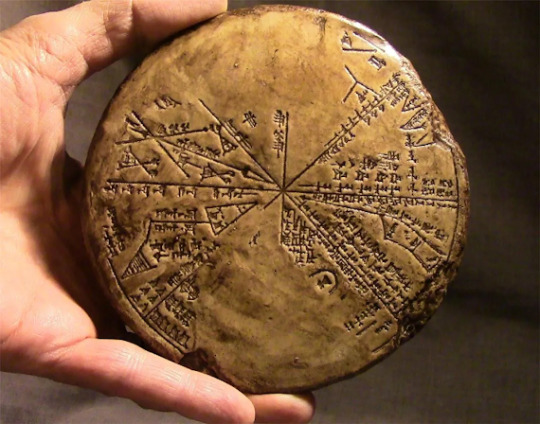
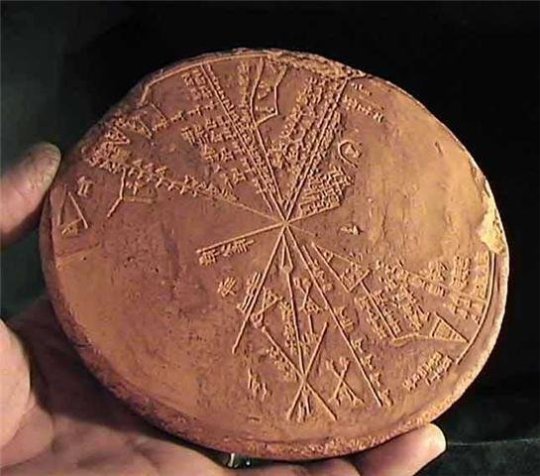
5,500-Year-Old Sumerian Star Map“For over 150 years scientists have tried to solve the mystery of a controversial cuneiform clay tablet that indicates the so-called Köfel’s impact event was observed in ancient times. The circular stone-cast tablet was recovered from the 650 BC underground library of King Ashurbanipal in Nineveh, Iraq in the late 19th century. Long thought to be an Assyrian tablet, computer analysis has matched it with the sky above Mesopotamia in 3300 BC and proves it to be of much more ancient Sumerian origin. The tablet is an “Astrolabe,” the earliest known astronomical instrument. It consists of a segmented, disk-shaped star chart with marked units of angle measure inscribed upon the rim.
36 notes
·
View notes
Text


i need everyone to see this mesopotamian spell to get your baby to sleep from the library of Ashurbanipal ...people have always been the same, parent have always tried to find ways to get their children to sleep 🥹
#mesopotamia#history#cuneiform#babylon#photography#ancient#ancient history#sumerian#my post#british museum#writing#ancient writing#spells
39 notes
·
View notes